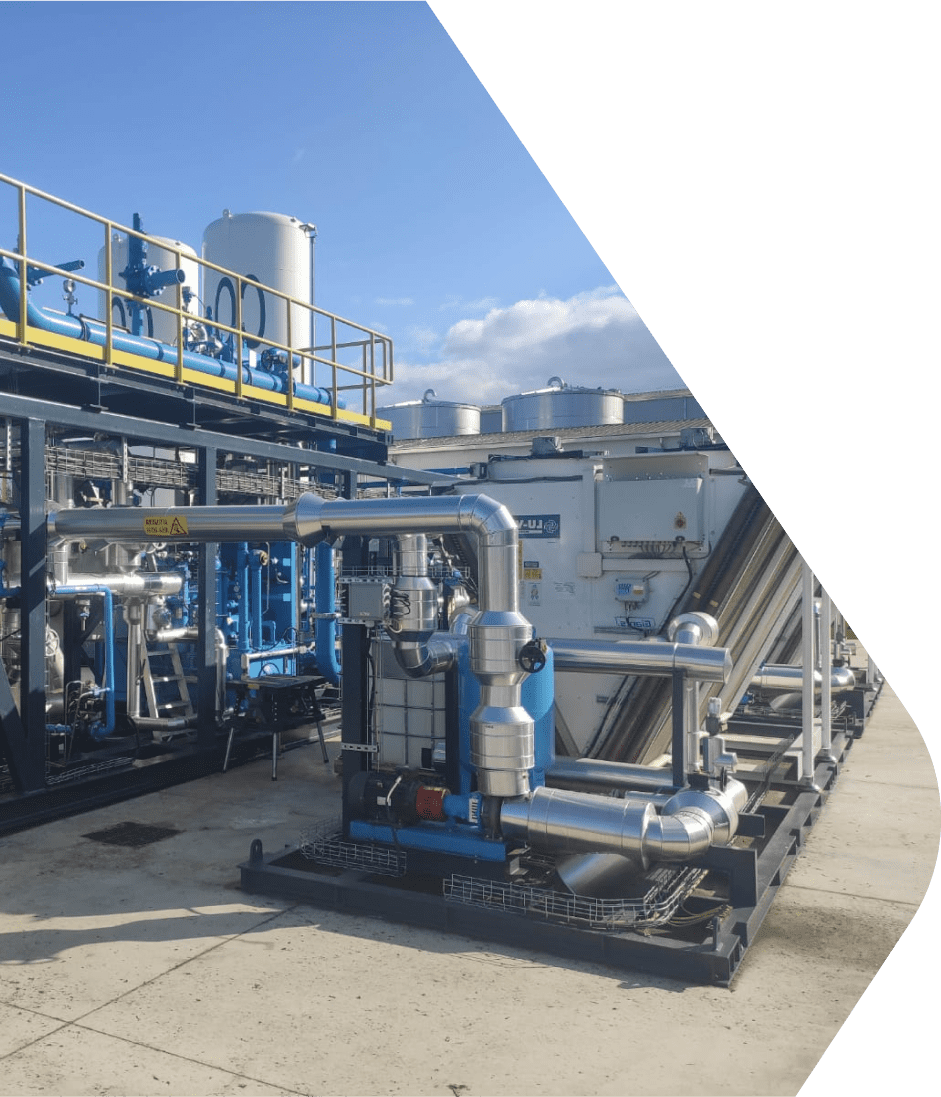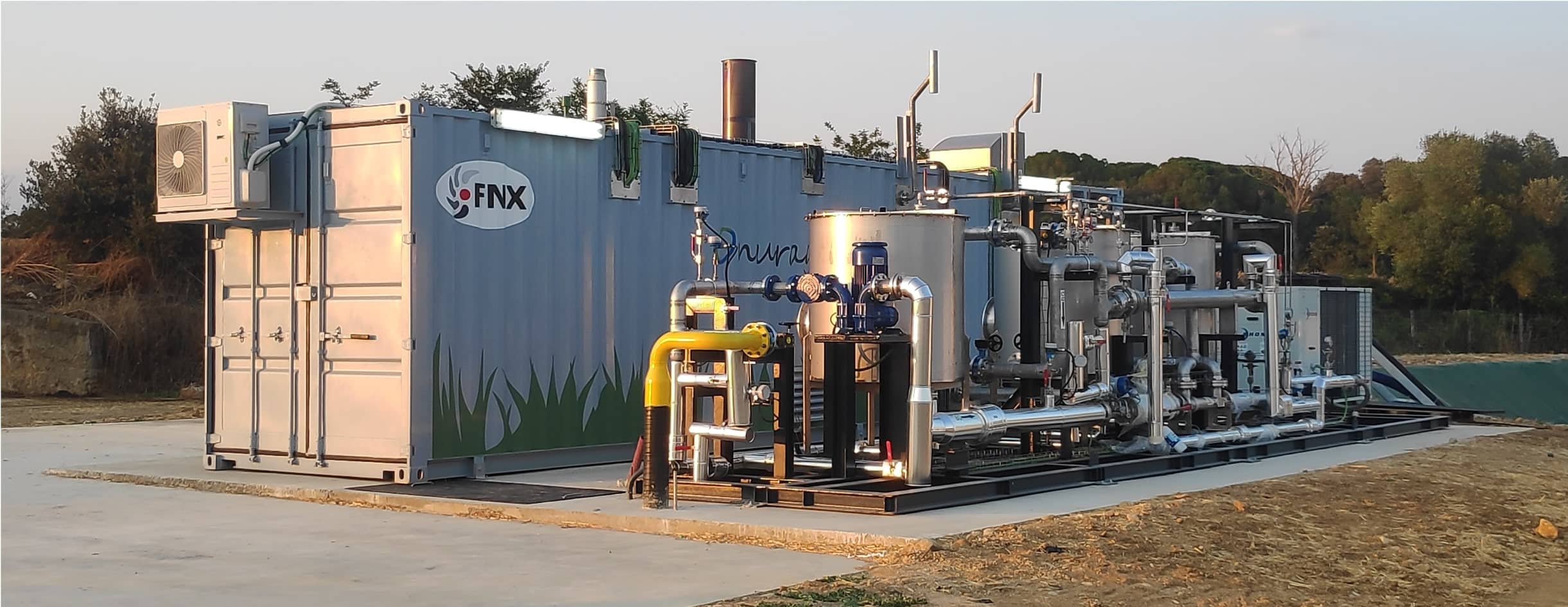Leading modular biogas upgrading technology
From biogas to biomethane, a versatile fuel for the clean energy transition
Biogas upgrading involves purifying raw biogas to produce biomethane, a higher-quality fuel that is a renewable substitute for natural gas. Raw biogas is produced through the anaerobic digestion of organic materials, such as agricultural and food waste.
While biogas is a renewable energy source, it contains impurities such as carbon dioxide, hydrogen sulphide, moisture, and other trace contaminants.
Why upgrade biogas?
Biogas upgrading enhances its energy content and makes it suitable for various applications. These include injection into the existing gas grid, use as vehicle fuel or for industrial processes.

Proprietary biogas upgrading technology
Our biogas-to-biomethane technology uses a membrane system to efficiently remove CO2 and achieve maximum levels of methane purity.
Our technology combines best-in-class processes with scalability and adaptability.
How it works
Technical Specifications
Technical Data | ONURAGAS -50 | ONURAGAS -150 | ONURAGAS -250 | ONURAGAS -400 | ONURAGAS -600 |
Biogas Input flow [Nm3/h] | 50 | 150 | 250 | 400 | 600 |
Minimal Biogas Input flow [Nm3/h] | 30 | 95 | 145 | 240 | 360 |
Biomethane production flow [Nm3/h] | 34 | 102 | 168 | 272 | 408 |
Biomethane production [MW/h] | 0.4 | 1.1 | 1.8 | 2.9 | 4.3 |
Biomethane Pressure [Bar-a] | 16 | 16 | 16 | 16 | 16 |
Biomethane Temperature [ºC] | 25 | 25 | 25 | 25 | 25 |
Featured projects
FAQs
What type of feedstock do you work with?
Our systems are optimised to work with agri-food waste: primarily cow and pig manure, as well as agricultural and food waste.
What do you mean when you say your units are small to medium scale?
Our modular upgrading units can range from 0.4 MWh up to 5 MWh of electrical equivalent output.
Is your biomethane suitable for grid injection?
Yes, our upgrading units produce Bio-CNG with over 99% of methane content that can be injected directly into the gas grid.

Liquefaction: The next step to decarbonise the transport industry
Our small- to medium-scale, modular liquefaction units work seamlessly with our upgrading technology. Together, they quickly and efficiently produce Bio-LNG of market-leading quality.

